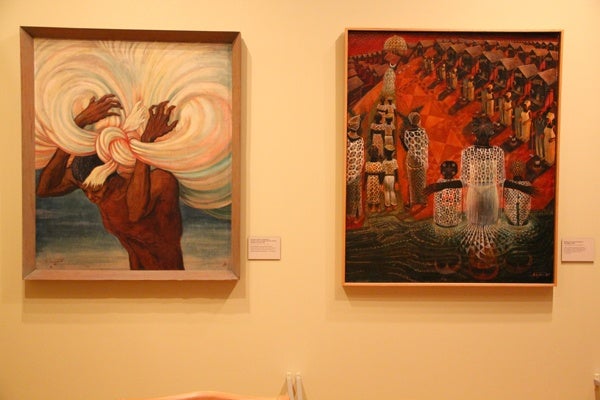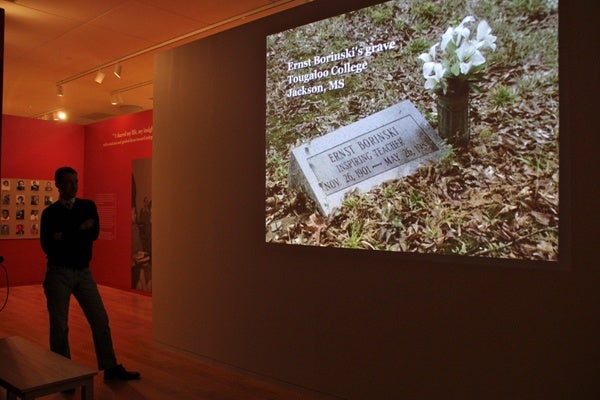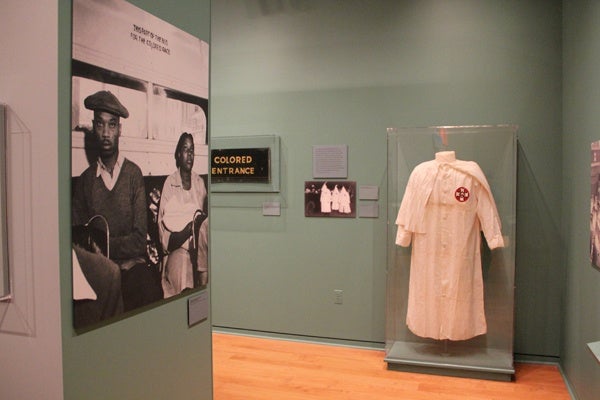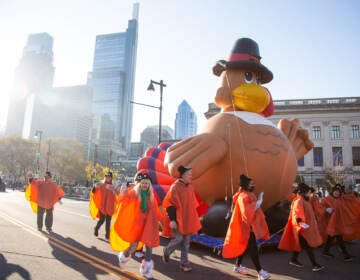Exhibit explores intersecting history of Jewish teachers, blacks of Jim Crow South
-

Paintings by Professor Viktor Lowenfeld and his student John Biggers are featured in the National Museum of Jewish History's exhibit about Jewish refugees who found work teaching a black colleges in the Jim Crow south. (Emma Lee/for NewsWorks)
-

The National Museum of Jewish American History uses video testaments to explore the lives of Jewish refugee scholars who found work at black colleges in the Jim Crow south after fleeing Nazi Germany. (Emma Lee/for NewsWorks)
-

The National Museum of Jewish American History explores the lives of Jewish refugee scholars who found work at black colleges in the Jim Crow south after fleeing Nazi Germany. (Emma Lee/for NewsWorks)
February is African American History month, and the National Museum of American Jewish History is now featuring an exhibit about a particular moment in the long history of the relationship between Jews and African-Americans.
Called “Beyond Swastika and Jim Crow,” the exhibition features artifacts heavy with meaning: a robe worn by a Klu Klux Klan member; a carved menorah lumpy with candle wax; a college football sweater.
The temporary, traveling exhibition on the top floor of the museum on Independence Mall tells the story of Jewish scholars fleeing Nazi persecution in the 1940s to find jobs teaching African-American students in historically black schools, including Howard University, Talladega and Tougaloo colleges.
“Jim Crow South was a considerable culture shock,” says curator Josh Perelman. “They left a situation in which they were the subjugated minority and … now they fill this liminal space. The African-Americans they were teaching were very challenged by Jim Crow society, and here come these white, Jewish professors who are white, but have no history with American racial politics.”
Many of the blacks and Jews bonded through academic study and their activism for civil rights. Some of those professional relationships and personal friendships lasted for the rest of their lives.
The exhibition grew out of a public television documentary in 2000, “From Swastika to Jim Crow,” that covered similar ground.
The museum added its own interactive component, with its video story telling booths.
“Start.””Do we start?””You start.”
The participants are nervous in front of the automated camera, but one woman prompted her male companion to talk about his mother, who was a teacher and activist in New York City. In dribs and drabs, he eventually tells the story of how she clashed with her African-American friends over school policy.
“What were they fighting about?” the woman prods.
“They were fighting about whether the curriculum should be taught by black teachers to black children,” he finally says. “My mother thought teachers should not be dismissed because they were white.”
This would have happened years after the time period presented in the museum exhibition, yet the same issues lingered.
WHYY is your source for fact-based, in-depth journalism and information. As a nonprofit organization, we rely on financial support from readers like you. Please give today.




